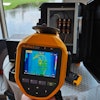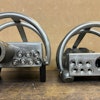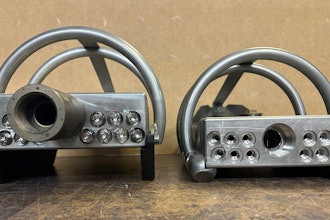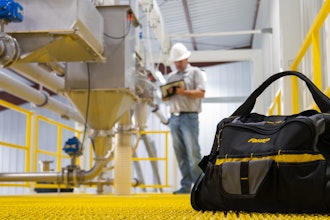This article first appeared in IMPO's September 2012 issue.
New technology takes power tool functionality and comfort from good to great.
Often, it’s the liaison between intention and accomplishment on a plant floor – the power tool is the “doer,” and it gets more efficient and effective as the related technology supports its efforts.
Oftentimes, power tools fix the mistakes the user could be making, especially when it comes to critical fastening issues relating to torque. According to San Jose CA-based Mountz, Inc., in the manufacturing and assembly world, tightening, controlling, or measuring torque fasteners is imperative for production efficiency. An inadequately torqued fastener can vibrate or work loose; conversely, if the tension is too high, the fastener can snap or strip its threads. Faced with these problems, manufacturers are realizing that precise torque control can spell the difference between a safe, reliable, and economical product and complete disaster.
It’s with these high stakes in mind that Mountz has worked to integrate the technology required to address the concerns in tight, in-plant areas.
“Our customers’ move toward battery or cordless torque screwdrivers and nutrunners is quite simple,” explains Brad Mountz, president and CEO of Mountz, Inc. “Cordless tools provide the freedom to maneuver tools into space-restricted assembly areas. Instead of dragging a tool with a dirty air hose or cable connected to it, fighting a tool balancer, or dealing with exhaust which can contaminate parts or change torque coefficients, these tools allow unmatched mobility and cleanliness.”
But getting tools into the right place can mean a tradeoff in battery life, versus that of a continuous power source. “Because batteries exhaust over time, determining when depletion creates torque degradation is vital to continued repeatability,” explains Mountz. In an effort to troubleshoot, today’s tools — like the Mountz Flex C product line — alert operators to battery degradation with LED indicators or by shutting down totally, disallowing use when the torque result is impacted by battery strength.
Other advances in technology in cordless tools, according to Mountz, include the brushless DC motor, which allow for nearly maintenance-free operation, tool life longevity and the newest capability— the ability to adjust starting speed and running speed, especially helpful when fastening self threading screws in plastic or sensitive materials. Also: “Adding torque sensors to these tools is a future requirement for even more accurate tightening applications,” he says. “While wireless interface to validate results is currently available, future advances will provide similar results to expense servo driven nutrunners in a less costly total package.”
Other functional issues, like user comfort, can create the ability for maintenance and assembly workers to use tools effectively and avoid contending with issues of safety or fatigue. According to Taryn Coughlin of Applied Industrial Technologies, authorized distributor for more than 2,000 world-class manufacturers including many power tool brands, the company’s customers truly appreciate many of the ergonomic benefits available from Applied’s sources. “They improve worksite safety by preventing injury – particularly injuries related to repetitive usage,” Coughlin adds. Applied is particularly excited about the latest AVT (anti-vibration technology) available in its Makita line of power tools. Makita’s AVT has adapted the science of “earthquake engineering” in order to provide the user with up to 3 times less vibration, less noise, and more efficient power. “They are far more ergonomically advanced than similar competitive products,” Coughlin explains, “and provide invaluable benefits for the safety and productivity of our customers.”
Ultimately, Coughlin says, Applied’s customers look for products with high quality performance, as well as those with a long life requiring minimal repairs – target areas that manufacturers of power tools seem to be taking a critical look at when it comes to their design and development. For more new, innovative products, check out pages 28-29.























